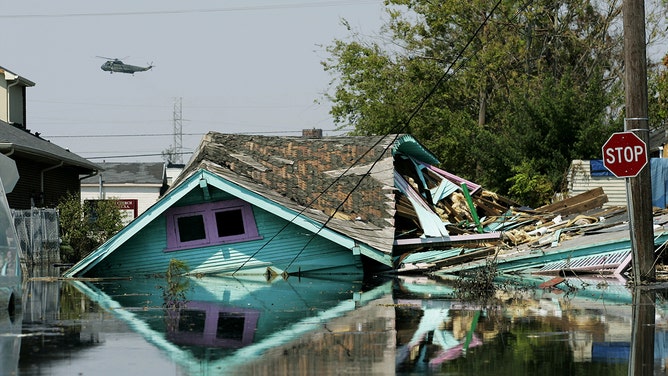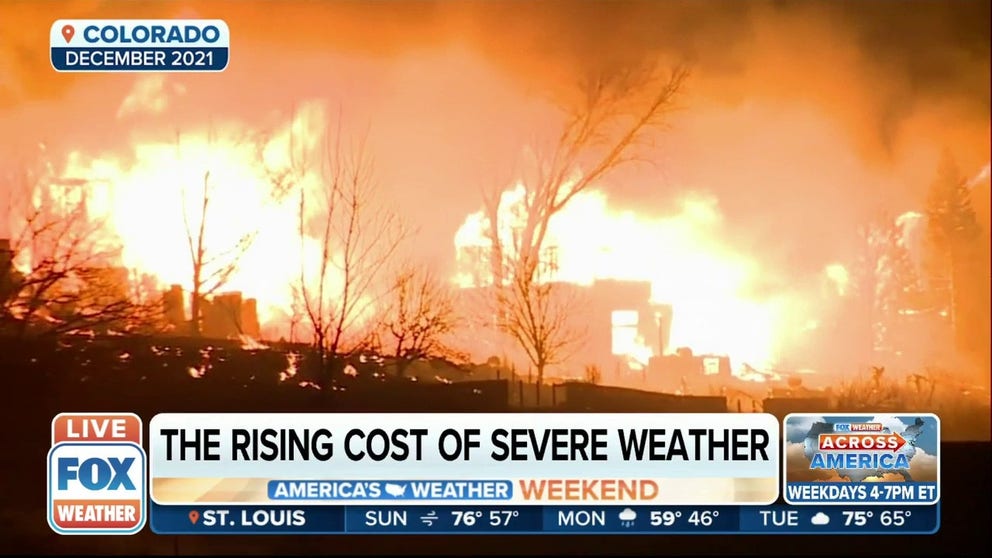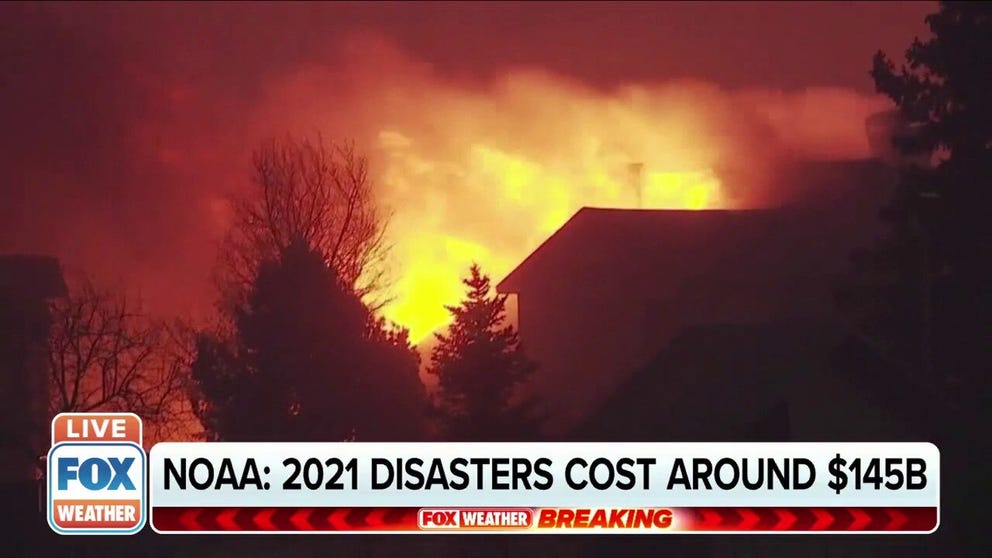Rising cost of severe weather: Government, businesses build resilience to disasters
“The storms that we're seeing are beginning to increase in terms of frequency and also the nature of the storms. And that can be tied back to the changing climate."
Rising cost of severe weather: Businesses build resilience to disasters
Last year ranked the third most expensive year on record for global weather disasters including four so-called
Last year ranked the third most expensive year on record for global weather disasters, including four so-called "mega-disasters," costing more than $20 billion each.
And with weeks of severe weather and destructive wildfires so far this year, the cost of disasters is not looking much better for 2022, especially with the predictions of another active hurricane season.
19 NAMED STORMS FORECAST FOR 7TH STRAIGHT ABOVE-AVERAGE ATLANTIC HURRICANE SEASON

Military helicopter buzzes over the splintered remains of a house in the flooded Ninth Ward neighborhood of New Orleans, La., in a search for survivors of Hurricane Katrina.
(Corey Sipkin/NY Daily News Archive / Getty Images)
According to Paul Walsh, general manager for BreezoMeter.com, part of what's happening now is that there are more people living in areas where they didn't live before that are being impacted by these storms.
"The storms that we're seeing are beginning to increase in terms of frequency and also the nature of the storms. And that can be tied back to the changing climate," Walsh said.
And disasters that might have happened once every 100 years now are happening once every 50 years.
NOAA: 2021 disasters cost around $145 billion
Last year, the U.S. had the second-highest number of billion-dollar weather and climate disasters on record, according to the National Oceanic and Atmospheric Administration.
"So when you overlay that with the fact that there's just more of us, and we're able to live here in the U.S. in areas where we didn't use to live before, it means that there's more what they call exposures," Walsh said.
2021 RANKED SECOND FOR HIGHEST NUMBER OF BILLION-DOLLAR WEATHER DISASTERS ON RECORD
Last year, the U.S. had the second-highest number of billion-dollar weather and climate disasters on record, according to the National Oceanic and Atmospheric Administration. The costliest event from 2021 was Hurricane Ida. It ranks among the top five most expensive hurricanes on record at $75 billion.
Last year’s disasters totaled nearly $145 billion for all 20 events. In 2020, there were more billion-dollar disasters but accumulated to less than last year’s total – 22 events totaling $102 billion. Over the last five years, the total cost of these disasters exceeded $742 billion.
As for the economic impact on these amounts, last year totaled $340 billion globally.

There were 20 separate billion-dollar weather and climate disasters in 2021.
(FOX Weather)
The federal government is now looking at ways to help build businesses back to be more resilient.
NOAA’s budget is about $7 billion for discretionary research -- about $1.5 billion more than what they received last year.
"There's a lot of effort now going into creating better data sets, better forecasts, ability to view from both from space and also radar," Walsh said.
And the result is that science becomes a manifest in terms of helping us be better prepared and resilient with more warnings ahead of time.
Also, more and more businesses are being created with an advanced initiative of climate technology, aiming to be able to help deal with this problem.
"Many companies are really getting into the space to try to take that enhance data that we're getting from the government and better forecasts that the more localized weather forecast and converting that into something that becomes meaningful for businesses," Walsh said.
And by doing so, they're helping businesses create value for themselves and also helping others live better lives.

